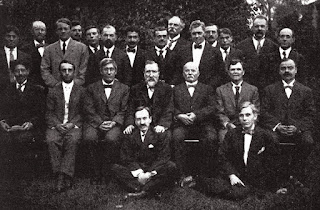Immediately after the publication of this diamond-mine of
communion with God[Gleanings from the Writings of Bahá'u'lláh], unsurpassed in
any religious literature of the world, Shoghi Effendi set to work on a longer
general letter than he had ever before written, which appeared in 1939 under
the title of The Advent of Divine Justice. With a kind but firm hand Shoghi
Effendi held up before the face of the North American Community the mirror of the
civilization by which they were surrounded and warned them, in terms that
riveted the eye and chilled the heart against its evils, pointing out to them a
truth few of them had ever pondered, namely, that the very evils of that
civilization were the mystic reason for their homeland having been chosen by
God as the cradle of His World Order in this day. As the warnings contained in
The Advent of Divine Justice are an integral part of the vision and guidance
Shoghi Effendi gave to the faithful throughout his ministry, they cannot be
passed over in silence if we are to obtain any correct understanding of his own
mission. In no uncertain terms he castigated the moral laxity, political
corruption, racial prejudice and corrosive materialism of their society, contrasting
it with the exalted standards inculcated by Bahá'u'lláh in His Teachings, and
enjoined by Him upon His followers. It warned them of the war so soon to come
and admonished them to stand fast, in spite of every trial that might in future
afflict them and their nations, and discharge their sacred trust by prosecuting
to a triumphal outcome the Plan they had so recently inaugurated throughout the
Western Hemisphere.
- Ruhiyyih Khanum ('The Guardian of the Baha'i Faith')
It is interesting to know that this document – the Advent of
Divine Justice – became known among the early Baha’is in the West as “the Bible
of Baha'i pioneers”. (Marzieh Gale, ‘Arches of the Years’)

















